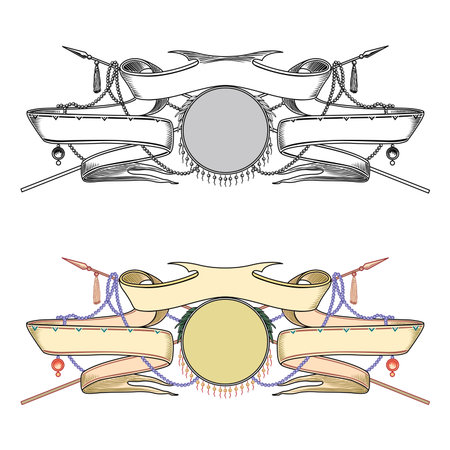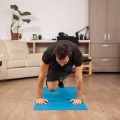1. Introduction to Post-Operative Rehabilitation
Post-operative rehabilitation is an essential phase of the recovery journey following surgery, playing a significant role in helping patients regain mobility, strength, and independence. After any surgical procedure, the body requires time and structured support to heal properly. Effective rehabilitation goes far beyond simply resting or waiting for wounds to mend; it involves a carefully tailored programme that addresses both physical and psychological needs. Engaging in post-operative rehabilitation can significantly improve long-term outcomes by reducing complications, minimising the risk of further injury, and accelerating the return to daily activities. In the UK, this approach is guided by evidence-based practices and patient-centred care, ensuring that each individual receives support suited to their unique circumstances and lifestyle. By understanding why rehabilitation is crucial after surgery, patients and their families are better equipped to participate actively in their recovery and achieve the best possible results.
2. Understanding Bracing: What Is It and How Does It Work?
Bracing is a fundamental component of post-operative rehabilitation, often prescribed to aid recovery following various orthopaedic procedures. At its core, bracing involves the use of supportive devices designed to stabilise, protect, and assist specific joints or body parts during the crucial healing period after surgery. The type of brace recommended will depend on the nature of your surgery, your individual needs, and your surgeon’s advice.
Types of Braces Commonly Used in Post-Operative Care
| Type of Brace | Typical Use | Key Features |
|---|---|---|
| Knee Brace | Knee replacements, ligament repairs (e.g., ACL) | Adjustable hinges, compression, range-of-motion control |
| Ankle/Foot Brace | Ankle sprains, Achilles tendon repair | Cushioning, immobilisation, arch support |
| Back Brace (Lumbar Support) | Spinal surgery, lumbar disc operations | Rigid or semi-rigid support, adjustable straps |
| Shoulder Immobiliser | Rotator cuff repair, shoulder stabilisation | Sling design, limits movement while allowing comfort |
| Wrist/Hand Splint | Carpal tunnel release, tendon repairs | Moulded fit, wrist alignment maintenance |
The Purpose of Bracing in Recovery
The primary objective of bracing is to provide external stability to the affected area as it heals. Braces can limit movement that might jeopardise surgical repairs, reduce pain by lessening strain on healing tissues, and help patients safely return to daily activities under controlled conditions. By supporting proper alignment and restricting potentially harmful motions, braces encourage optimal healing and help prevent complications such as re-injury or undue stress on recovering tissues.
How Braces Support the Healing Process
- Immobilisation: Prevents unwanted movement that could disrupt surgical repairs.
- Pain Management: Reduces discomfort by offloading pressure from sensitive structures.
- Protection: Shields vulnerable areas from accidental bumps or twists during early recovery.
- Confidence: Provides reassurance for patients as they gradually increase activity levels.
Your healthcare team will guide you in selecting the most appropriate brace for your situation and instruct you on correct usage. Following their recommendations ensures that bracing effectively contributes to a smoother and safer recovery journey.

3. When Is Bracing Recommended?
Bracing is a common recommendation by healthcare professionals during post-operative rehabilitation, but it is not universally required for every patient or procedure. The decision to use a brace depends on various factors such as the type of surgery, the joint or area involved, and individual patient needs. Typically, bracing is advised after orthopaedic surgeries, including those involving the knee, spine, shoulder, or ankle. For example, following ligament reconstruction in the knee—such as an anterior cruciate ligament (ACL) repair—a knee brace may be prescribed to restrict certain movements and provide stability during the early stages of healing.
Similarly, after spinal surgeries like lumbar fusion, a back brace can help limit motion and reduce strain on the healing tissues. In upper limb procedures, such as rotator cuff repairs or elbow surgeries, braces or slings are often recommended to immobilise the joint and prevent accidental injury while tissues mend. Bracing may also be suggested for patients with certain medical conditions that affect bone strength or joint stability—for instance, those with osteoporosis who are at higher risk of fractures.
Healthcare professionals assess each case individually, considering factors such as the patients age, activity level, and overall health status. They aim to strike a balance between protecting the surgical site and allowing enough movement to promote circulation and prevent stiffness. Ultimately, bracing is most commonly recommended when additional support is essential for safe recovery or when there is a significant risk of re-injury without external stabilisation.
4. Bracing in the UK: Patient Pathways and NHS Guidance
In the United Kingdom, post-operative rehabilitation—including the use of bracing—follows a patient-centred approach structured around NHS protocols and evidence-based practice. Understanding how bracing fits within these pathways is essential for both patients and healthcare professionals to optimise recovery outcomes.
Patient Pathways Following Surgery
The journey through post-operative care is often multidisciplinary, involving consultants, physiotherapists, occupational therapists, and nursing staff. The decision to use a brace is tailored to each individual based on surgical procedure, injury severity, and personal circumstances. Typically, after surgery, patients are assessed for their mobility needs and the potential benefits of bracing. This assessment ensures that any device prescribed supports healing without compromising comfort or independence.
NHS Protocols on Bracing
The NHS provides clear guidance regarding the prescription and monitoring of braces. These guidelines ensure safe application and regular review to minimise complications such as pressure sores or restricted movement. Below is a summary table outlining typical NHS considerations when prescribing bracing:
| Consideration | Description |
|---|---|
| Assessment Criteria | Type of surgery, patient mobility, risk factors, and anticipated recovery timeline |
| Type of Brace | Rigid or flexible, custom-fitted or off-the-shelf based on clinical needs |
| Duration of Use | Guided by consultants recommendation; typically reviewed at follow-up appointments |
| Patient Education | Instructions on wear time, skin care, hygiene, and warning signs for complications |
Patient Considerations and Support
The NHS also emphasises holistic support for patients adjusting to life with a brace. Patients are encouraged to raise concerns about discomfort or difficulty performing daily activities. Occupational therapists may provide practical advice on adapting home environments, while physiotherapists design exercise plans to maintain muscle strength during bracing periods.
Empowering Patients Through Information
A core part of the UK approach is empowering patients with clear information so they can actively participate in their own recovery. Written leaflets, digital resources via the NHS website, and direct communication with the care team all contribute to informed decision-making and improved outcomes.
5. Living with a Brace: Practical Tips for Daily Life
Adapting to life with a post-operative brace can feel daunting at first, but with the right approach, it becomes manageable and even empowering. Here are some practical tips to help you navigate everyday activities, stay comfortable, and maintain good hygiene during your recovery.
Managing Everyday Activities
Wearing a brace may limit certain movements, so it’s important to plan ahead. Choose clothing that is loose-fitting and easy to put on or take off, such as tracksuits or clothes with Velcro fastenings. If you need to move around the house, keep frequently used items within easy reach to avoid unnecessary stretching or bending. When going out, consider public transport options or ask friends and family for lifts if driving is not advised during your recovery period.
Maximising Comfort
Comfort is key when wearing a brace for extended periods. Ensure your brace fits properly; if it feels too tight or causes rubbing, consult your healthcare provider for adjustments. Use soft padding underneath the brace if recommended by your clinician. Take regular breaks as allowed by your medical team to relieve pressure and prevent skin irritation.
Maintaining Hygiene
Keeping clean while using a brace can be challenging but is essential to prevent skin problems. If your brace is removable, follow your healthcare provider’s instructions for cleaning both your skin and the device itself. For fixed braces, use a damp cloth to gently wipe around the edges each day, taking care not to let moisture build up under the brace. Always dry thoroughly afterwards. Speak to your nurse or physiotherapist about suitable skincare products if you notice redness or soreness.
Seeking Support
If you’re struggling with any aspect of living with a brace, don’t hesitate to reach out for support. Your clinical team is there to help you adapt safely and comfortably throughout your rehabilitation journey.
6. Potential Challenges and How to Overcome Them
While bracing is a crucial component in many post-operative rehabilitation programmes, it is not without its challenges. Patients commonly experience concerns such as discomfort, skin irritation, restricted mobility, and difficulties adhering to prescribed wearing schedules. Understanding these obstacles and knowing how to address them can significantly enhance both comfort and compliance during recovery.
Common Concerns with Bracing
The most frequently reported issues include pressure points where the brace contacts the skin, excessive heat or sweating beneath the brace, and a sense of confinement that may impact daily activities. Some individuals may also feel self-conscious about wearing a visible brace, especially in social or professional settings.
Practical Solutions for Improved Comfort
To minimise discomfort, it’s important to ensure the brace is correctly fitted by a qualified healthcare professional. Wearing a thin layer of moisture-wicking clothing under the brace can help reduce skin irritation and manage perspiration. Regularly checking the skin for any signs of redness or breakdown allows for early intervention, while gentle skin care routines can keep the area healthy. If discomfort persists, consult your physiotherapist or orthotist for possible adjustments.
Promoting Adherence and Confidence
Adhering to the recommended bracing schedule is vital for optimal healing. Setting reminders, keeping a diary, or asking family members to help monitor wear time can be beneficial strategies. If you feel embarrassed about your brace, remember that it is a temporary tool designed to support your recovery and long-term wellbeing. Many patients find that discussing their concerns openly with their healthcare team leads to practical advice and reassurance.
By addressing these common challenges proactively and seeking support when needed, patients can make their post-operative rehabilitation journey more comfortable and successful. Your healthcare providers are there to guide you every step of the way—never hesitate to ask questions or request adjustments if something does not feel right.
7. Conclusion: Partnering with Your Healthcare Team for Optimal Recovery
Achieving the best possible outcome after surgery is not just about following a standard protocol—it is a highly individualised journey that requires close collaboration between you and your healthcare team. Open and honest communication with your surgeon, physiotherapist, or rehabilitation specialist is vital to ensure that any concerns or changes in your condition are addressed promptly. By actively engaging in discussions about your progress, challenges, and goals, you help shape a rehabilitation plan that truly reflects your needs.
Adhering to your personalised rehabilitation plan, including the appropriate use of bracing as recommended by your clinicians, can make a substantial difference to your recovery timeline and overall results. Bracing, when used correctly, offers support, protection, and reassurance during those crucial weeks and months post-operation. However, it is essential to remember that no two patients are alike—your recovery pathway is unique to you.
If at any stage you feel unsure about an aspect of your care—be it the fit of your brace, discomfort, or how to perform prescribed exercises—do not hesitate to reach out to your healthcare professionals. Their guidance is rooted in evidence-based practice and tailored to your specific case.
In summary, forming a strong partnership with your healthcare team and committing to the bespoke rehabilitation plan they create with you will greatly enhance your recovery experience. By communicating openly and following their expert advice, you give yourself the best chance of returning to full function and resuming the activities you enjoy most.


